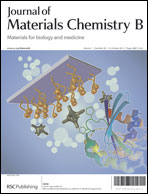Nanomaterials for bio-functionalized electrodes: recent trends
Abstract
Recent years have faced stimulating developments in the functionalization of electrode surfaces with biological materials, notably due to the significant input of nanosciences and nanotechnology. In this review (over 450 references), we are discussing the interest of both nano-objects (metal nanoparticles and quantum dots, carbon nanotubes and graphene) and nano-engineered and/or nanostructured materials (template-based materials, advanced organic polymers) for the rational design of bio-functionalized electrodes and related (bio)sensing systems. The attractiveness of such nanomaterials relies not only on their ability to act as effective immobilization matrices, which are, e.g., likely to enhance the long-term stability of bioelectrochemical devices, but also on their intrinsic and unique features (large surface areas, electrocatalytic properties, controlled morphology and structure, possible use as labels) that can be advantageously combined with the functioning of biomolecules, thus contributing to improved bioelectrode performance in terms of sensitivity and selectivity (enzymatic biosensors, DNA sensors, immunosensors and cell sensors) or power (biofuel cells).


 Please wait while we load your content...
Please wait while we load your content...